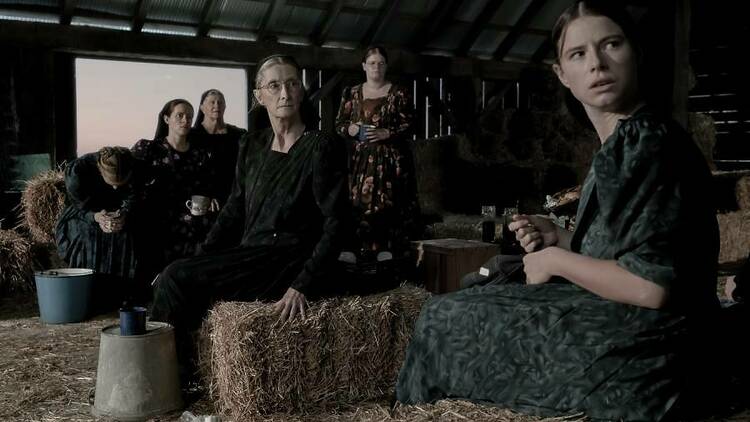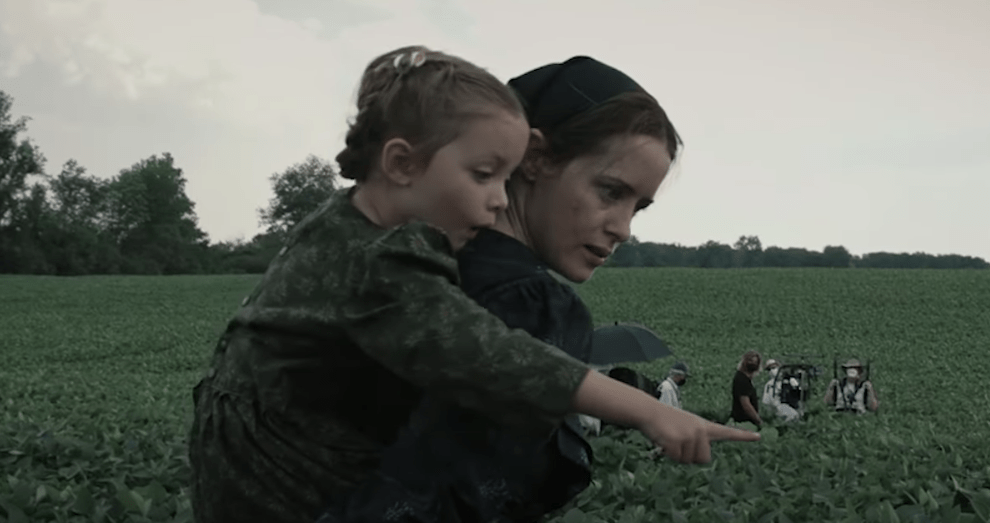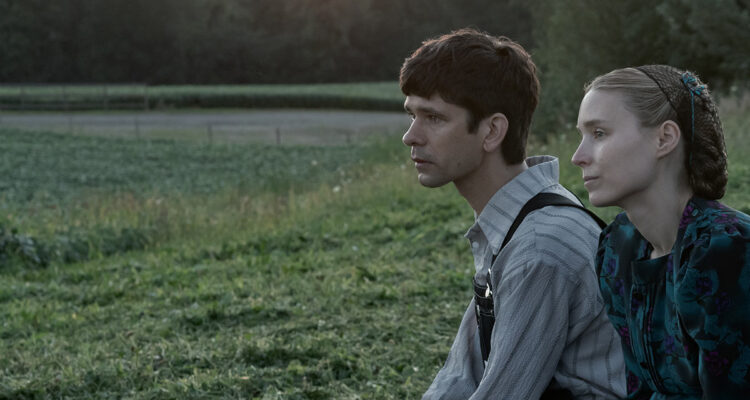Women Talking is a poignant discussion on what it takes to not only survive an atrocity, but move on from it.
Although the title is Women Talking, the film’s most striking moments may be the time between spoken words. In these spaces, the audience has an opportunity to contemplate and better realize the power of the words being spoken by characters who are facing an impossible decision. As a character pauses, realizing the implications of her thoughts, we feel the weight of her words and the implications they allude to. It is a film with incredibly powerful dialogue, but the silence hits just as hard.
Women Talking
Directed By: Sarah Polley
Written By: Sarah Polley
Starring: Rooney Mara, Claire Foy, Jessie Buckley, Judeth Ivey, Ben Whishaw
Release Date: December 23, 2022
Women Talking is part historical drama, part philosophical debate, part existential crisis. The women of a Mennonite colony have been victims of battery and sexual assault for a long time. The men of the colony drug them and have traditionally explained the occurrences as supernatural or else the fault of the women. When perpetrators are eventually caught, they are handed over to law enforcement. As the men leave the colony to help post bail, the women and children are left alone to contemplate their future.
The decision they face is deceivingly simple. Three choices are presented. First, they can continue living in the colony the same way they have always known, trying to forgive the men. Second, they can stay but try to fight for their rights. Finally, they can leave, without the men, and try to live life outside of the colony, in a world that is as foreign to them as they are to it. Each choice has difficult consequences to deal with, and none guarantee continued safety for these women and their children.

The struggle is not just for the victims physical well-being. Leaving the colony threatens their spiritual sanctity as well. They question if they will be able to find God, or if God will be able to find them, when they leave. There’s also the matter of the men using religion to control the women, restricting their education and resorting to blasphemy to uphold their power. We see the scars, wounds, and bruises from the physical assaults, but we hear the emotion in their voices (or in the case of one character, lack of voice) from the psychological torment these victims have had to endure.
The film takes its inspiration from an actual event that occurred, but isn’t striving to be a re-creation. Instead, it serves as an examination of the thoughts and motivations of these women on this precipice of change. It essentially stops time to deep-dive into the impact of sexual assault not just on the victims, but the community in which they exist. It makes arguments about how the community can never be whole again, even with forgiveness. The victims have to live with the consequences of these crimes for the rest of their lives, while the perpetrators’ consequences are short-term reprimands, if anything.
Director Sarah Polley takes a deliberately stand-offish approach. The film doesn’t concern itself with getting to know the characters beyond the impacts of these crimes upon their lives. The film doesn’t show us the men who treated these women so poorly, nor does it give them an opportunity to provide alternate arguments. There are no grisly details, or recreations of these traumas for the audience to experience first hand. Instead, the film is about the aftermath, the consideration of available options, and the difficulty of moving forward. This makes it feel different, and unique in its approach.

So often films are “retellings” of events from histories or stories from novels. Although Women Talking is based on a novel, it isn’t trying to glorify the character’s experiences. To be effective the film doesn’t need to make the audience feel sorry for the characters by putting you in their shoes. Instead, we feel for them because of the way they articulate and express their (often conflicting) feelings. We see this internal battle playing out in their words and expressions. It’s more than just the immediate act which grabs us, we’re seeing the ongoing collateral. It is a much more sensitive, and tactful approach.
I appreciated how the film tells us nothing about the perpetrators of these crimes. We never see their faces, or hear their voices. This informs the audience that the perspective is only on the women and they must decide on their own separated from the influence of the men which has so heavily weighed on their lives to this point. Although the topic can be difficult and emotional, the film is celebrating the underlying strength of these women and their fortitude in face of this situation. Without seeing the acts or knowing the perpetrators, the film doesn’t allow distractions from its intent.
I’ve alluded to it, but what really makes this film work is the incredible ensemble cast. Although everyone provides powerful performances, there isn’t really one cast member who stands out among the rest. This isn’t a criticism of their performances, quite the opposite. They all have their moments to shine, and leave a formidable impression. Each of them establishes their own recognizable perspective, and brings it to the table with relatable emotion and presence. The dialogue itself is very strong, but the way the actors convey it really makes this an engaging film despite the somewhat one-dimensional narrative.

Sarah Polley’s direction is also another component which makes a strong impression. Despite the various characters and often shifting perspectives, Polly affords the film with a structure that keeps it moving along. She uses flashbacks not to reference narrative events in a traditional way, but the emotions stemming from them and using that as a driving force in the current discussion. The film is also narrated by one of the young women, which provides the overall experience with a unique impression from someone who is experiencing this type of horror, and awakening, at such a young age.
The film has a deeply saturated look, as if all the color has been worn away. It construes a serious topic at hand, and literally sheds a dark shadow over the proceedings. Certainly the near black-and-white photography speaks to colony’s independence from modern technology, but it also provides connotation to the gray area in which the narrative explores. The situation isn’t black and white, and so the film follows suit.
Interspaced between the discussions and flashbacks are interludes of children playing in the fields. There is no meaningful dialogue or context, simply the image to run through your mind continuously as the decisions loom large. These moments allude to the high stakes at play. These children have not experienced the horrors and rigidity of the society these women have been subject to. Will they grow up to keep things the way they are, or can things change? The meditation upon these moments helps the audience see the bigger picture. This is not just a discussion about this particular group of people, the implications of the discussion apply to all of us.

